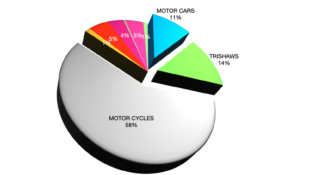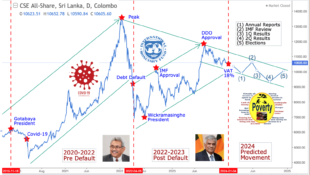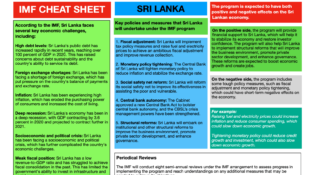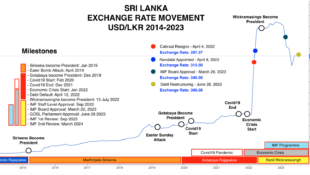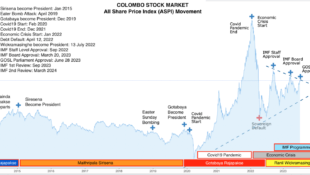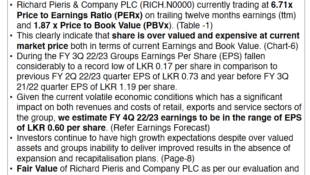13.3 Inflationary Consequences of Exchange Rate Systems
[list=orderedlist][*]Learn how a fixed exchange rate system can be used to reduce inflation.[/list]
One important reason to choose a system of fixed exchange rates is to try to dampen inflationary tendencies. Many countries have (over time) experienced the following kind of situation. The government faces pressure from constituents to increase spending and raise transfer payments, which it does. However, it does not finance these expenditure increases with higher taxes since this is very unpopular. This leads to a sizeable budget deficit that can grow over time. When the deficits grow sufficiently large, the government may become unable to borrow additional money without raising the interest rate on bonds to unacceptably high levels. An easy way out of this fiscal dilemma is to finance the public deficits with purchases of bonds by the country’s central bank. In this instance, a country will be financing the budget deficit by monetizing the debt, also known as printing money. New money means an increase in the domestic money supply, which will have two effects.
The short-term effect will be to lower interest rates. With free capital mobility, a reduction in interest rates will make foreign deposits relatively more attractive to investors and there is likely to be an increase in supply of domestic currency on the foreign exchange market. If floating exchange rates are in place, the domestic currency will depreciate with respect to other currencies. The long-term effect of the money supply increase will be inflation, if the gross domestic product (GDP) growth does not rise fast enough to keep up with the increase in money. Thus we often see countries experiencing a rapidly depreciating currency together with a rapid inflation rate. A good example of this trend was seen in Turkey during the 1980s and 1990s.
One effective way to reduce or eliminate this inflationary tendency is to fix one’s currency. A fixed exchange rate acts as a constraint that prevents the domestic money supply from rising too rapidly. Here’s how it works.
Suppose a country fixes its currency to another country—a reserve country. Next, imagine that the same circumstances from the story above begin to occur. Rising budget deficits lead to central bank financing, which increases the money supply of the country. As the money supply rises, interest rates decrease and investors begin to move savings abroad, and so there is an increase in supply of the domestic currency on the foreign exchange market. However, now the country must prevent the depreciation of the currency since it has a fixed exchange rate. This means that the increase in supply of domestic currency by private investors will be purchased by the central bank to balance supply and demand at the fixed exchange rate. The central bank will be running a balance of payments deficit in this case, which will result in a reduction in the domestic money supply.
This means that as the central bank prints money to finance the budget deficit, it will simultaneously need to run a balance of payments deficit, which will soak up domestic money. The net effect on the money supply should be such as to maintain the fixed exchange rate with the money supply rising proportionate to the rate of growth in the economy. If the latter is true, there will be little to no inflation occurring. Thus a fixed exchange rate system can eliminate inflationary tendencies.
Of course, for the fixed exchange rate to be effective in reducing inflation over a long period, it will be necessary that the country avoid devaluations. Devaluations occur because the central bank runs persistent balance of payments deficits and is about to run out of foreign exchange reserves. Once the devaluation occurs, the country will be able to support a much higher level of money supply that in turn will have a positive influence on the inflation rate. If devaluations occur frequently, then it is almost as if the country is on a floating exchange rate system in which case there is no effective constraint on the money supply and inflation can again get out of control.
To make the fixed exchange rate system more credible and to prevent regular devaluation, countries will sometime use a currency board arrangement. With a currency board, there is no central bank with discretion over policy. Instead, the country legislates an automatic exchange rate intervention mechanism that forces the fixed exchange rate to be maintained.
For even more credibility, countries such as Ecuador and El Salvador have dollarized their currencies. In these cases, the country simply uses the other country’s currency as its legal tender and there is no longer any ability to print money or let one’s money supply get out of control.
However, in other circumstances fixed exchange rates have resulted in more, rather than less, inflation. In the late 1960s and early 1970s, much of the developed world was under the Bretton Woods system of fixed exchange rates. The reserve currency was the U.S. dollar, meaning that all other countries fixed their currency value to the U.S. dollar. When rapid increases in the U.S. money supply led to a surge of inflation in the United States, the other nonreserve countries like Britain, Germany, France, and Japan were forced to run balance of payments surpluses to maintain their fixed exchange rates. These BoP surpluses raised these countries’ money supplies, which in turn led to an increase in inflation. Thus, in essence, U.S. inflation was exported to many other countries because of the fixed exchange rate system.
The lesson from these stories is that sometimes fixed exchange rates tend to lower inflation while at other times they tend to increase it. The key is to fix your currency to something that is not likely to rise in value (inflate) too quickly. In the 1980 and 1990s, when the European Exchange Rate Mechanism (ERM) was in place, countries were in practice fixed to the German deutschmark. Since the German central bank was probably the least prone to inflationary tendencies, all other European countries were able to bring their inflation rates down substantially due to the ERM system. However, had the countries fixed to the Italian lira, inflation may have been much more rapid throughout Europe over the two decades.
Many people propose a return to the gold standard precisely because it fixes a currency to something that is presumed to be steadier in value over time. Under a gold standard, inflation would be tied to the increase in monetary gold stocks. Because gold is strictly limited in physical quantity, only a limited amount can be discovered and added to gold stocks each year, Thus inflation may be adequately constrained. But because of other problems with a return to gold as the monetary support, a return to this type of system seems unlikely.
KEY TAKEAWAYS
- A fixed exchange rate can act as a constraint to prevent the domestic money supply from rising too rapidly (i.e., if the reserve currency country has noninflationary monetary policies).
- Adoption of a foreign country’s currency as your own is perhaps the most credible method of fixing the exchange rate.
- Sometimes, as in the Bretton Woods system, a fixed exchange rate system leads to more inflation. This occurs if the reserve currency country engages in excessively expansionary monetary policy.
- A gold standard is sometimes advocated precisely because it fixes a currency to something (i.e., gold) that is presumed to be more steady in value over time.
EXERCISE
[list=orderedlist][*]Jeopardy Questions. As in the popular television game show, you are given an answer to a question and you must respond with the question. For example, if the answer is “a tax on imports,” then the correct question is “What is a tariff?”
[list=orderedlist][*]Hyperactivity in this aggregate variable is often a reason countries turn to fixed exchange rates.
[*]If a country fixes its exchange rate, it effectively imports this policy from the reserve country.
[*]A country fixing its exchange rate can experience high inflation if this country also experiences high inflation.
[*]Of relatively low or relatively high, to limit inflation a country should choose to fix its currency to a country whose money supply growth is this.
[*]The name for the post–World War II exchange rate system that demonstrated how countries fixing their currency could experience high inflation.
[/list]
[/list]
 would enable you to enjoy an array of other services such as Member Rankings, User Groups, Own Posts & Profile, Exclusive Research, Live Chat Box etc..
would enable you to enjoy an array of other services such as Member Rankings, User Groups, Own Posts & Profile, Exclusive Research, Live Chat Box etc.. 
 Home
Home










